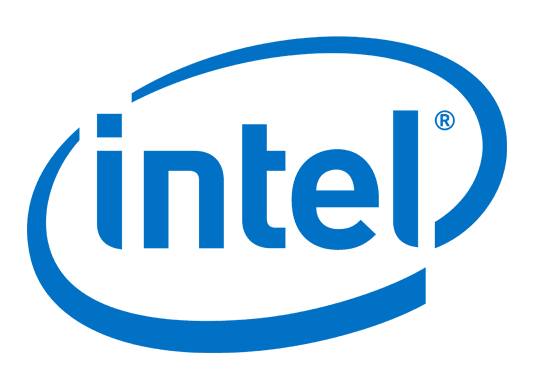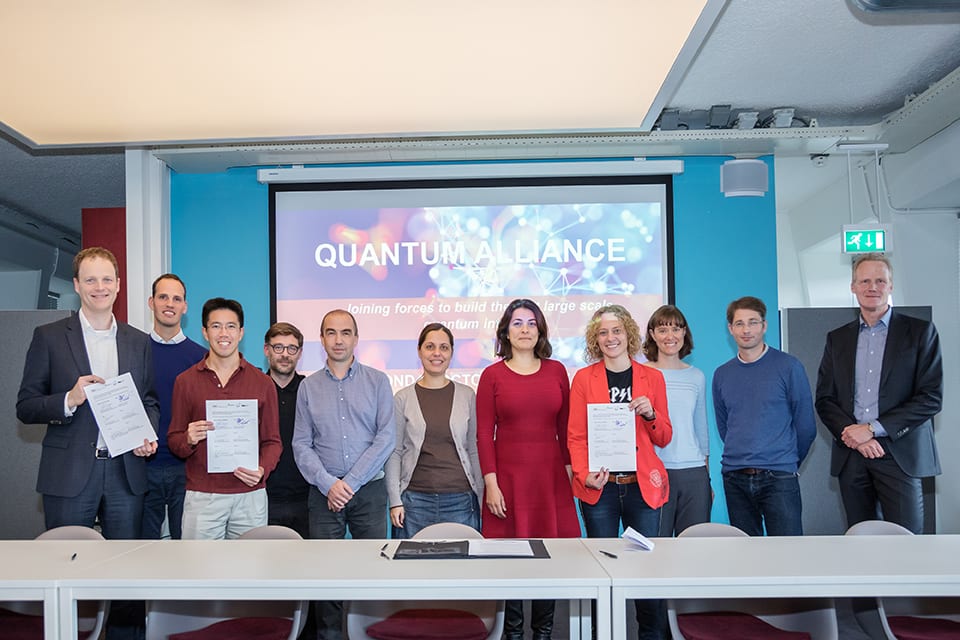10.10.2017Quantum Computing
Quantum Physics Meets Intel Engineering

Intel Delivers 17-Qubit Superconducting Chip with Advanced Packaging to QuTech
Today Intel announced the delivery of a 17-qubit superconducting test chip for quantum computing to QuTech. The new chip was fabricated by Intel and features a unique design to achieve improved yield and performance.
The delivery of this chip demonstrates the fast progress Intel and QuTech are making in researching and developing a working quantum computing system. It also underscores the importance of material science and semiconductor manufacturing in realizing the promise of quantum computing.
Quantum computing, in essence, is the ultimate in parallel computing, with the potential to tackle problems conventional computers can’t handle. For example, quantum computers may simulate nature to advance research in chemistry, materials science and molecular modeling – like helping to create a new catalyst to sequester carbon dioxide, a room temperature superconductor, or discover new drugs.
However, despite much experimental progress and speculation, there are inherent challenges to building viable, large-scale quantum systems that produce accurate outputs. Making qubits (the building blocks of quantum computing) uniform and stable is one such obstacle.
Check out the unboxing of the new chip at QuTech:
Qubits are tremendously fragile, and any noise or unintended observation of them can cause data loss. This fragility requires them to operate at about 20 millikelvin – 250 times colder than deep space, and this extreme operating environment makes the packaging of qubits key to their performance and function. Intel’s Components Research Group (CR) in Oregon and Assembly Test and Technology Development (ATTD) teams in Arizona are pushing the limits of chip design and packaging technology to address quantum computing’s unique challenges.
About the size of a quarter (in a package about the size of a half-dollar coin), the new 17-qubit test chip’s improved design features include:
- New architecture allowing improved reliability, thermal performance, and reduced radio frequency (RF) interference between qubits.
- A scalable interconnect scheme that allows for 10-100 times more signals into and out of the chip as compared to wirebonded chips.
- Advanced processes, materials and designs that enable Intel’s packaging to scale for quantum integrated circuits, which are much larger than conventional silicon chips.
“Our quantum research has progressed to the point where our partner QuTech is simulating quantum algorithm workloads, and Intel is fabricating new qubit test chips on regular basis in our leading-edge manufacturing facilities,” said Dr. Michael Mayberry, corporate vice president and managing director of Intel Labs. “Intel’s expertise in fabrication, control electronics and architecture sets us apart and will serve us well as we venture into new computing paradigms from neuromorphic to quantum computing.”
